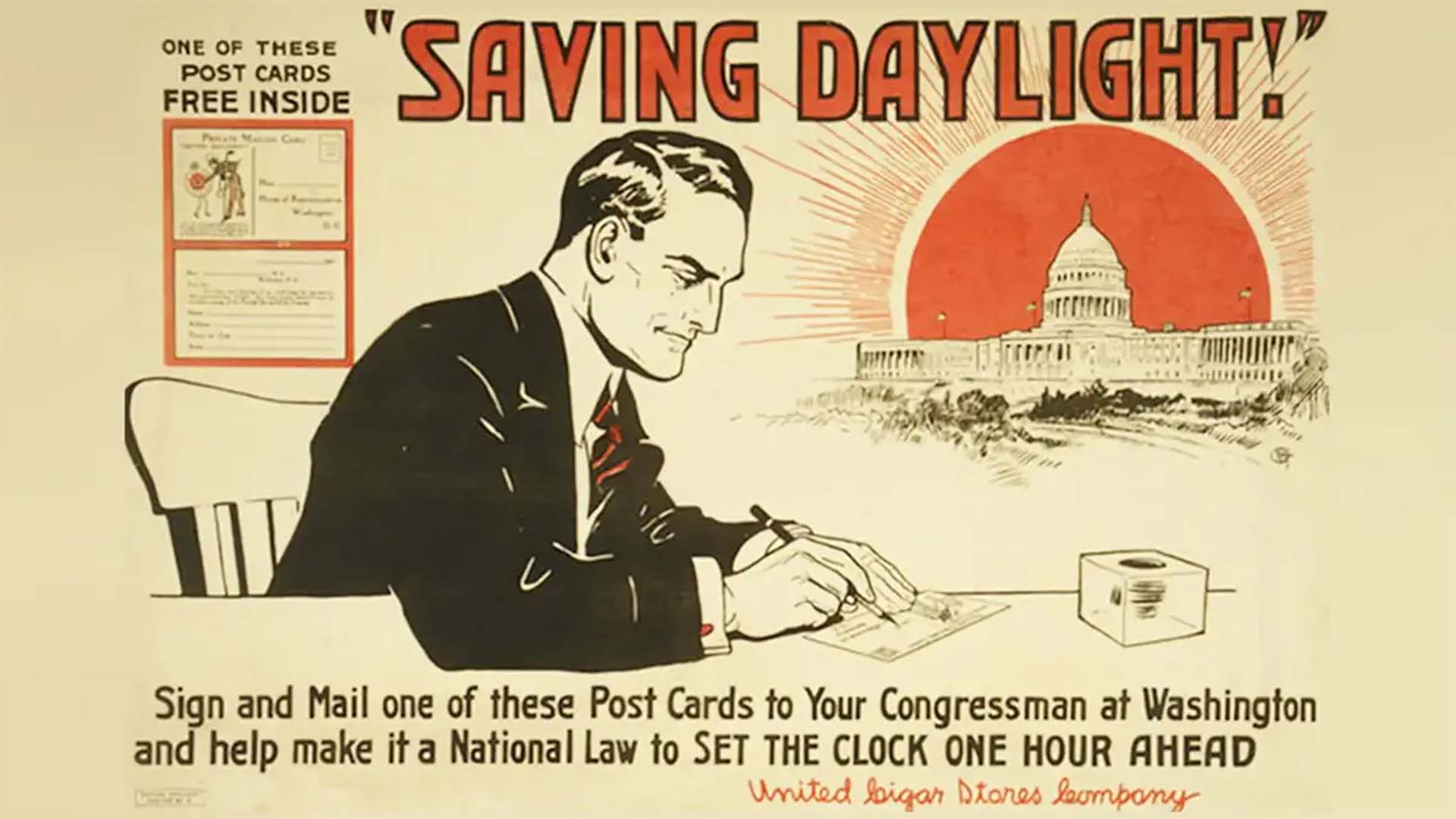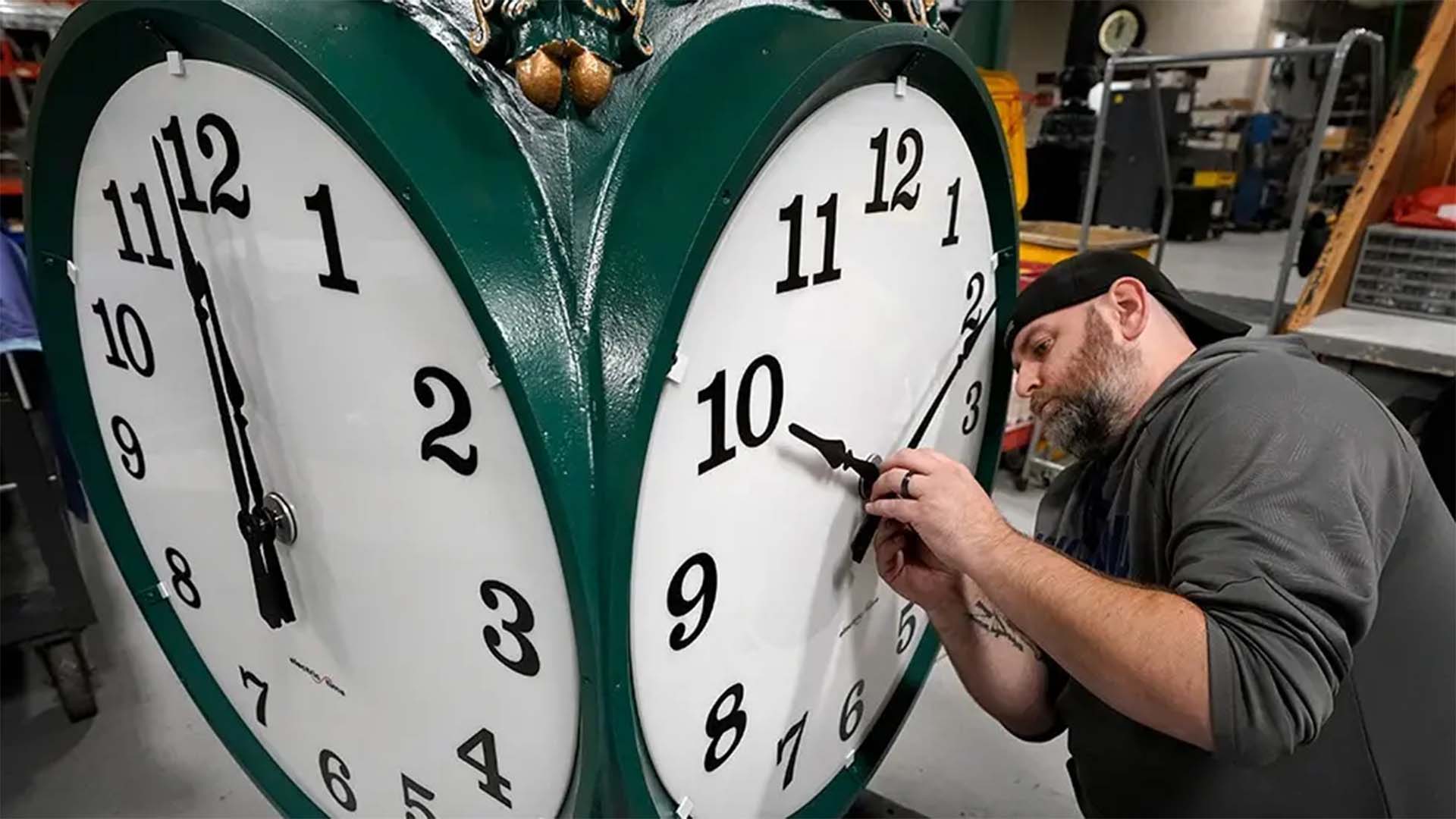Don’t forget to “spring forward” this weekend for the start of daylight saving time! On Sunday, March 12 at 2 a.m., most Americans will set their clocks ahead one hour. What is the history of this annual ritual, and is it soon coming to an end?
The History of Daylight Saving
Daylight saving time (DST) was first practically used in 1908 in Thunder Bay, Ontario when businessman John Hewitson wanted to enjoy an extra hour of the summer sun. Nearby towns in Canada followed suit in the following years, but the idea did not catch on globally until 1916 in Germany.
Clocks in the German Empire and Austria were turned ahead by one hour on April 30, 1916 (two years into World War I to minimize the use of artificial lighting to save fuel for the war effort. The United Kingdom, France, and other countries followed the idea for the duration of the war, and DST returned to most of Europe during World War II. In 1996, the European Union standardized the DST schedule, with clocks moving forward on the last Sunday of March and moving back on the last Sunday of October.

As for the United States, DST was not adopted until 1918 when a bill introduced the idea of a seasonal time shift. After lasting just seven months, the law was repealed because of its unpopularity, and DST became a local option.
In 1966, the Uniform Time Act mandated standard time across the country within established time zones to standardize the business and transportation industry. State legislatures could vote to keep the entire state on standard time. The Federal law was amended in 1986 to begin DST on the first Sunday in April and in 2005 to begin DST on the second Sunday of March, which is what has remained today.
Is Daylight Saving Ending in 2023?
In March 2022, legislation called the Sunshine Act was unanimously passed by the U.S. Senate to effectively eliminate DST in the United States, except for Hawaii and parts of Arizona. However, the measure was not approved by the House of Representatives before the 117th session of Congress ended in January 2023, so daylight saving remains for now.
In March 2023, the bill was reintroduced for the 118th Congress. The bill will need to be passed again by the U.S. Senate before it can be sent to the House of Representatives.

In both 2022 and 2023, the Sunshine Act was introduced by Senator Marco Rubio who argues that eliminating DST would reduce crime, encourage kids to play outside, and lower the risk of both heart attacks and car accidents.
Many studies support the issues with DST. For example, in a 2015 study published in Sleep Medicine, researchers in Finland compared the rate of stroke in more than 3,000 people during the week following a daylight saving time transition to the rate in nearly 12,000 people two weeks before or two weeks after that week. Researchers found that the overall rate of having a stroke was 8 percent higher during the first two days following the transition to daylight saving from 2004 to 2013. A 2020 study published in Current Biology also found that fatal traffic accidents in the U.S. rose 6 percent in the week after daylight saving started.







